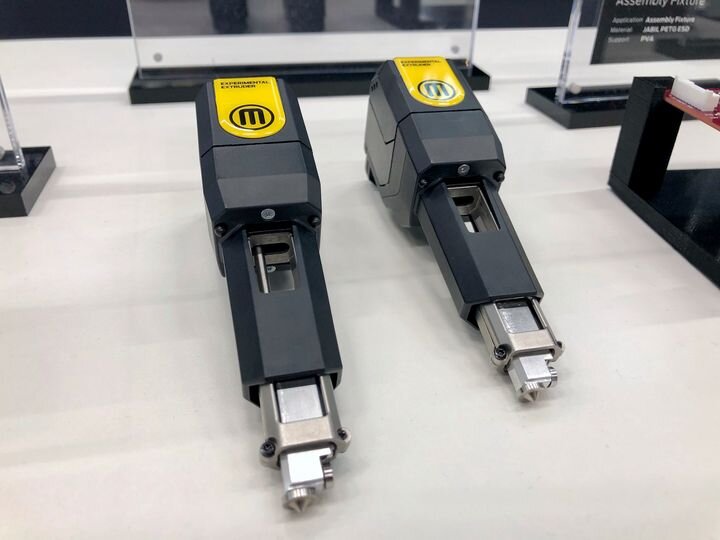![MakerBot’s Experimental Extruder [Source: Fabbaloo]](https://fabbaloo.com/wp-content/uploads/2020/05/image-asset_img_5eb08bb6c0dbb.jpg)
There’s been quite a change at MakerBot over the past few months with the announcement of a change in their approach to materials.
MakerBot is one of the oldest desktop 3D printer manufacturers in existence, and certainly one of the most well-known in their early days due to their incredible PR campaigns. Since then, though, the company has taken a torturous journey to get where they are today.
The company grew, was sold, was restaffed, fixed products, developed new products and essentially re-invented itself. It’s taken a few years, but now they’re in a rather interesting position.
MakerBot METHOD
We’ve already published stories on their powerful METHOD X, their current flagship 3D printer. This is a machine that is entirely focused on achieving the highest quality output through the use of no less than 21 on board sensors with real-time feedback and adjustments. The machine offers a fully heated build chamber that is so effective it does not require a heated build surface, unlike almost every other 3D printer on the market.
The machine does achieve a very high level of quality, as we noted during an inspection of some print samples a few months ago.
But there was one problem with the machine: material choice.
This has been a persistent issue with MakerBot ever since the Stratasys takeover. At that time their products could only 3D print in PLA material, with the exception of the hard-to-use and aging Replicator 2X. The company tried to overcome this with the quite-useful “Tough PLA”, but for professionals there were not a lot of material options.
That’s because the machines made by MakerBot did not really have the capability of 3D printing other materials. Their Replicator+, for example, is a great 3D printer, but it is an open format and thus would have trouble 3D printing many desirable materials if one were to try.
MakerBot Materials
The introduction of the original METHOD 3D printer changed the equation. It was an enclosed device with a heated chamber (60C) that employed plenty of sensors to provide for much better print quality and reliability. This allowed MakerBot to expand their available materials to include several more popular options.
Then the METHOD X appeared, with a chamber temperature of 100C. This much higher temperature allowed for a great many more material options.
There was still a problem, though, as you effectively had to purchase materials for the METHOD 3D printers from MakerBot to ensure good print results: MakerBot has finely tuned the print profiles to do so. Other materials could be used, but you were mostly on your own to tune the print parameters.
MakerBot LABS Experimental Extruder
But with MakerBot’s METHOD Materials Development Program and MakerBot LABS Experimental Extruder for METHOD, they seem to have broken through the materials barrier in a big way.
The hardware part of this equation is the Experimental Extruder, shown at top. This is a quick-swap extruder option for the METHOD that allows for the use of many materials beyond their current offerings. This hardware allows for the use of different nozzle configurations as well.
METHOD Materials Development Program
The Materials Development Program is a partnership program whereby MakerBot joins with a materials supplier to create finely-tuned print profiles that can be included in their slicing software, MakerBot Print. They’ve partnered with a number of high-quality 3D printer filament suppliers, including Jabil, KIMYA, Polymaker, and Mitsubishi Chemical and are likely to add many more.
Instead of purchasing materials directly from MakerBot, you can purchase specific materials from any of the partner suppliers or their resellers. This effectively makes the METHOD X an open materials machine.
It’s a bit ironic, as the original MakerBot devices years ago boasted of being open materials — so long as it was ABS or PLA. However, today’s MakerBot METHOD X materials ecosystem is far more powerful.
Via MakerBot

